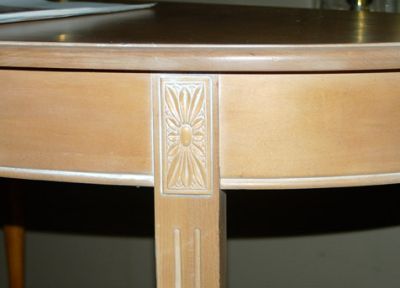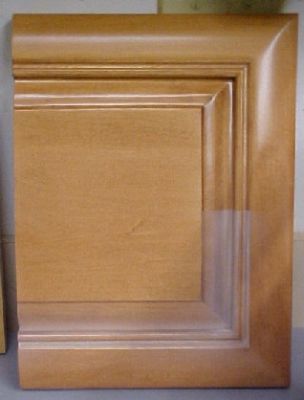Question
I have to match the finish on an Ethan Allen table. I am close to the color with Minwax Fruitwood wiping stain. Problem is, after staining, the tiny grain marks in hard maple are dark.
My test schedule so far is: Sand wood to 220 grit. Wash coat with 1 part pre-cat lacquer to 3 parts lacquer thinner, let dry. Wipe stain on and off. Now the dark grain shows.
I haven't finished the test as yet with the vinyl sealer, glaze, vinyl sealer and then topcoat.
Any suggestions to eliminate the dark grain?

Forum Responses
(Finishing Forum)
From contributor R:
Try more of a wash coat. In other words, use a bit less lacquer thinner to your sealer. If you still have an issue with the grain showing dark, make a toner the same color and spray on the base coat, seal the toner and apply your pure white glaze.
From your picture, I'm going to take a stab at the color, but most likely you will have to adjust it to an actual match. As with any finishing step, you need to practice on a scrap piece prior to jumping into the real deal.
Apply to a smooth surface a mixture of sanding sealer that has some titanium dioxide and burnt umber colorants mixed into it. You may need a little yellow as well. Apply a few light coats of the toner until you have an even background color that matches the background color of your sample. If you try to achieve the color all at once, you could end up with a heavily painted look that shows no grain pattern at all. Apply multiple, thin coats. Once you're happy with the background color, proceed with your glazing steps.

Here is my schedule:
1. washcoat - 1p lacquer, 2p lacquer thinner
2. stain - oil base wipe on
3. seal - vinyl sealer
4. toner
5. seal - vinyl sealer
6. glaze
7. seal - vinyl sealer
8. topcoat - SW pre-cat
Just wondering if the sealer after the stain could be eliminated?